
Philip José Farmer (1918-2009) was a long-time SF author and pulp fan. He turned his love of the pulps into several works using the pulp characters he loved the most: Tarzan and Doc Savage.
He wrote a pair of “biographies” of these characters, taking the view that they were real characters and that the stories we read were based on true adventures. This is not an unusual idea, as this has been used with other characters like Sherlock Holmes. In fact, Farmer’s intended name for his Tarzan work was inspired by the Holmes biography “The Private Life of Sherlock Holmes.”
But Farmer took the idea further, creating the concept of the “Wold Newton Family” and the “Wold Newton Universe.” Some like this idea, some do not. But even if you don’t care for this idea, you can still enjoy these works as they give a very detailed look at these characters. These works were extensively researched by Farmer. They are in no way “puff” pieces.
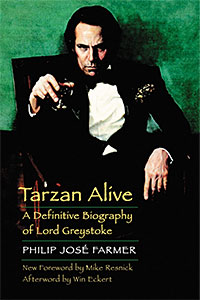 The first work is “Tarzan Alive.” It appeared in hardcover from Doubleday in 1972, then got reprinted in paperback by Popular in 1973. I was able to get the paperback edition from Playboy Press in 1981. Most recently, it has been reprinted in trade paperback by Bison Books in 2009. This edition is the one to get because it also includes two subsequent works by Farmer: “An Exclusive Interview With Lord Greystoke” (1972) and “Extracts from the Memoirs of ‘Lord Greystoke’ ” (1974), as well as a foreword by Win Scott Eckert and an introduction by Mike Resnick.
The first work is “Tarzan Alive.” It appeared in hardcover from Doubleday in 1972, then got reprinted in paperback by Popular in 1973. I was able to get the paperback edition from Playboy Press in 1981. Most recently, it has been reprinted in trade paperback by Bison Books in 2009. This edition is the one to get because it also includes two subsequent works by Farmer: “An Exclusive Interview With Lord Greystoke” (1972) and “Extracts from the Memoirs of ‘Lord Greystoke’ ” (1974), as well as a foreword by Win Scott Eckert and an introduction by Mike Resnick.
The work is organized as a basic biography, looking at events leading up to Tarzan’s birth, his early childhood, and then on to the adventures he had. Some ideas that Farmer puts forth is that Tarzan was not raised by apes, but by a previously unknown ape-like primate. This is important as this primate species needed to be one that used language, otherwise Tarzan himself would not have known language. It’s know that feral children are “stunted” if they are not introduced to language in their early lives.
Another idea (which I’m not certain is original to him) is that Tarzan had access to something that either made him immortal or extended his life, hence allowing him to still be alive today. Obviously, his real name is not “Tarzan” or “John Clayton” or “Lord Greystoke.” We never learn his real name (or what Farmer thought it was).
The second work is “Doc Savage: His Apocalyptic Life.” It appeared in hardcover from Doubleday in 1973, then got updated paperbacks from Bantam in 1975 and Playboy Press in 1981 (I got both of those). Most recently, Meteor House did an revised and expanded edition in hardcover in 2013, while Altus Press put out the revised edition in paperback the same year (without the extras).
In this work, we get chapters that focus on different aspects of Doc and those around him. We get chapters on Lester Dent himself, and the birth and early life of Doc. We also get chapters on all his aides, as well as his cousin Pat and the pets of Ham and Monk. There are chapters on his headquarters (including a layout of it), the Hidalgo Trading Company, his Fortress of Solitude, the Crime College and more. And we learn that Doc’s real name is James Clarke Wildman, and he (actually his father) ties into a Sherlock Holmes story.
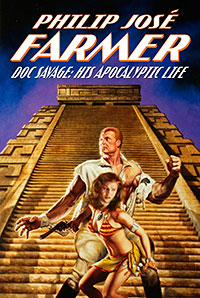 This book was the first one I got as a young fan on Doc Savage and it had a big impact on me. It would be a long while before I found other works on Doc in those pre-Internet days. I remember rearranging my Bantam paperbacks into Farmer’s order before I realized that was silly, and put them back in pulp order. (I always ignored Bantam’s ordering.) Again, like the work on Tarzan, even if you don’t agree with Farmer’s ideas of Doc’s family ties, he brought together a lot of great info on Doc Savage and associates.
This book was the first one I got as a young fan on Doc Savage and it had a big impact on me. It would be a long while before I found other works on Doc in those pre-Internet days. I remember rearranging my Bantam paperbacks into Farmer’s order before I realized that was silly, and put them back in pulp order. (I always ignored Bantam’s ordering.) Again, like the work on Tarzan, even if you don’t agree with Farmer’s ideas of Doc’s family ties, he brought together a lot of great info on Doc Savage and associates.
Now, at the beginning I made mention of the Wold Newton Family and Wold Newton Universe without explaining them. The Wold Newton Family (WNF) was set down in “Tarzan Alive” and expanded and corrected upon the “DS:HAL.” It goes beyond the idea that Tarzan and Doc are based on real people, but that many of the fictional characters are based on real people and that many of these people are all inter-related and connected to Wold Newton, a small village in Yorkshire, England. A group of people were in Wold Newton when a meteorite landed there on Dec. 13, 1795 (this really happened). This meteorite was radioactive, and caused genetic mutations in the offspring of those people, giving them higher intelligence and greater physical abilities, and leading many of them to do good things or bad.
This “family” includes the real-life people upon which where based the characters of not just Tarzan and Doc Savage, but also Sherlock Holmes, Professor Moriarty, Fu Manchu, Solomon Kane, Captain Blood, The Scarlet Pimpernel, Phileas Fogg, Allan Quatermain, A.J. Raffles, Professor Challenger, Bulldog Drummond, G-8, The Shadow, Sam Spade, The Spider, Nero Wolfe, Mr. Moto, The Avenger, Philip Marlowe, James Bond, Lew Archer, Travis McGee, Monsieur Lecoq, Arsène Lupin, and many more.
The Wold Newton Universe (WNU) is used to refer to stories that tie into other stories that contain members of the WNF, but which themselves do not have such characters. It’s important to know that having a “crossover” work (where two literary characters met) does not necessarily make it a WNU work. Those who work within the WNF and WNU try to work out chronologies for these characters and write tales that explain the connections between them. A series of works I have been reviewing here that using the WNU concept heavily is the “Tales of the Shadowmen” series, which works to expand upon the WNU to include characters from French pulps and others.
I should point out that Farmer wrote further non-fiction works along this lines, all short articles that appeared in various pulp fanzines. I believe most, if not all, have been reprinted in “Myths For the Modern Age” (Monkeybrain, 2005).
But, again, even if you don’t like the concept of the WNF and WNU, you can still enjoy these two works. They give a wealth of information on Tarzan and Doc Savage. We are fortunate that they are now both easily accessible.

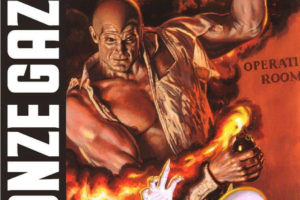
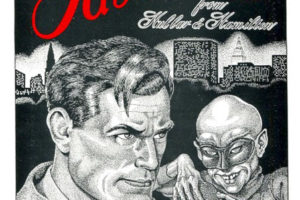
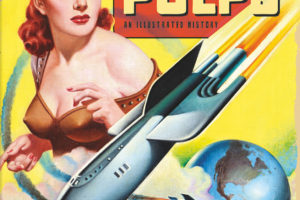
In 1981, I was fortunate enough to meet Phil Farmer and got my copy of “Doc Savage: His Apocalyptic Life,” autographed. It is, of course, one of the crown jewels of my pulp collection. I have theorized since, however, that in 1945, when Captain America went missing, Doc was recruited to replace him (although he later left the program). There is a gap in Farmer’s chronology which would allow for this. I wonder if the pertinent files will ever be de-classified.